Was a new regional power, once thought of as a bloodthirsty invading force, actually a catalyst for ancient Egypt’s most prosperous era?

Egypt’s carefully recorded lists of rulers run pharaoh after pharaoh for almost 3,000 years. Except, that is, for a century or so around 1640 B.C. when a new group came to dominate the kingdom on the Nile, throwing the region into turmoil and ushering in a new era in Egyptian history.
“For what cause I know not, a blast of the gods smote us; and unexpectedly, from the regions of the East, invaders of obscure race marched in confidence of victory against our land,” writes Manetho, a priest and the author of a history of Egypt called Aegyptiaca likely written in the third century B.C. Despite the fact that he is describing events at a remove of almost 1,500 years, and although his writings survive only because they are quoted in even later works, such as the first century A.D. author Josephus’ “Against Apion,” the account is no less evocative. “By main force, they easily overpowered the rulers of the land; they then burned our cities ruthlessly, razed to the ground the temples of gods, and treated all the natives with a cruel hostility, massacring some and leading into slavery the wives and children of others, and appointing as king one of their number.”
When it came to the story of the rise and short-lived rule of these “invaders of obscure race,” for centuries scholars took for granted Manetho’s account of invasion and disruption as reproduced by Josephus. The tale was supported by other historical accounts, from tables of dynasties, rulers, and reigns found in Egyptian temples to papyrus lists of Egypt’s dynasties. Egyptologists tended to treat the period as a ripple in an otherwise unbroken stream that soon smoothed and vanished, a curious footnote in the three-millennia-long sweep of Egyptian history.
Esta historia es de la edición September/October 2018 de Archaeology.
Comience su prueba gratuita de Magzter GOLD de 7 días para acceder a miles de historias premium seleccionadas y a más de 9,000 revistas y periódicos.
Ya eres suscriptor ? Conectar
Esta historia es de la edición September/October 2018 de Archaeology.
Comience su prueba gratuita de Magzter GOLD de 7 días para acceder a miles de historias premium seleccionadas y a más de 9,000 revistas y periódicos.
Ya eres suscriptor? Conectar

ORIGINS OF PERUVIAN RELIGION
While investigating looters' holes at the site of La Otra Banda in northern Peru's Zaña Valley, archaeologist Luis A. Muro Ynoñán of the Field Museum and the Pontifical Catholic University of Peru spotted carved blocks around seven feet below the surface.

ISLAND OF FREEDOM
Many of the enslaved Africans sent to Brazil beginning in 1549 were from what is now Angola, where one of the most widely spoken languages was Kimbundu.
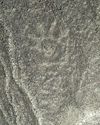
NAZCA GHOST GLYPHS
From the 1940s to the early 2000s, geoglyphs were discovered in the Nazca Desert of southern Peru depicting animals, humans, and other figures at the rate of 1.5 per year.

COLONIAL COMPANIONS
The ancestry of dogs in seventeenth-century Jamestown offers a window into social dynamics between Indigenous people and early colonists.
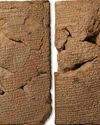
BAD MOON RISING
The British Museum houses around 130,000 clay tablets from ancient Mesopotamia written in cuneiform script between 3200 B.C. and the first century A.D.
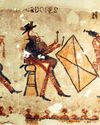
DANCING DAYS OF THE MAYA
In the mountains of Guatemala, murals depict elaborate performances combining Catholic and Indigenous traditions
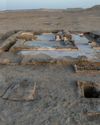
LOST GREEK TRAGEDIES REVIVED
How a scholar discovered passages from a great Athenian playwright on a discarded papyrus

Medieval England's Coveted Cargo
Archaeologists dive on a ship laden with marble bound for the kingdom's grandest cathedrals

Unearthing a Forgotten Roman Town
A stretch of Italian farmland concealed one of the small cities that powered the empire
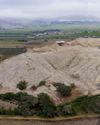
TOP 10 DISCOVERIES OF 2024
ARCHAEOLOGY magazine reveals the year's most exciting finds